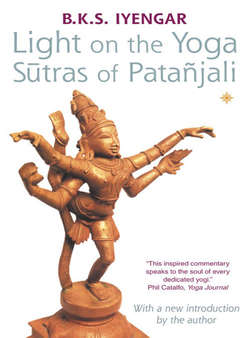Читать книгу Light on the Yoga Sutras of Patanjali - Литагент HarperCollins USD - Страница 16
Study of consciousness
ОглавлениеBefore describing the principles of yoga, Patañjali speaks of consciousness and the restraint of its movements.
The verb cit means to perceive, to notice, to know, to understand, to long for, to desire and to remind. As a noun, cit means thought, emotion, intellect, feeling, disposition, vision, heart, soul, Brahman. Cinta means disturbed or anxious thoughts, and cintana means deliberate thinking. Both are facets of citta. As they must be restrained through the discipline of yoga, yoga is defined as citta vrtti nirodhah. A perfectly subdued and pure citta is divine and at one with the soul.
Citta is the individual counterpart of mahat, the universal consciousness. It is the seat of the intelligence that sprouts from conscience, antahkarana, the organ of virtue and religious knowledge. If the soul is the seed of conscience, conscience is the source of consciousness, intelligence and mind. The thinking processes of consciousness embody mind, intelligence and ego. The mind has the power to imagine, think, attend to, aim, feel and will. The mind’s continual swaying affects its inner sheaths, intelligence, ego, consciousness and the self.
Mind is mercurial by nature, elusive and hard to grasp. However, it is the one organ which reflects both the external and internal worlds. Though it has the faculty of seeing things within and without, its more natural tendency is to involve itself with objects of the visible, rather than the inner world.
In collaboration with the senses, mind perceives things for the individual to see, observe, feel and experience. These experiences may be painful, painless or pleasurable. Through their influence, impulsiveness and other tendencies or moods creep into the mind, making it a storehouse of imprints (samskaras) and desires (vAsanas), which create excitement and emotional impressions. If these are favourable they create good imprints; if unfavourable they cause repugnance. These imprints generate the fluctuations, modifications and modulations of consciousness. If the mind is not disciplined and purified, it becomes involved with the objects experienced, creating sorrow and unhappiness.
Patañjali begins the treatise on yoga by explaining the functioning of the mind, so that we may learn to discipline it, and intelligence, ego and consciousness may be restrained, subdued and diffused, then drawn towards the core of our being and absorbed in the soul. This is yoga.
Patañjali explains that painful and painless imprints are gathered by five means: pramana, or direct perception, which is knowledge that arises from correct thought or right conception and is perpetual and true; viparyaya, or misperception and misconception, leading to contrary knowledge; vikalpa, or imagination or fancy; nidra or sleep; and smrti or memory. These are the fields in which the mind operates, and through which experience is gathered and stored.
Direct perception is derived from one’s own experience, through inference, or from the perusal of sacred books or the words of authoritative masters. To be true and distinct, it should be real and self-evident. Its correctness should be verified by reasoned doubt, logic and reflection. Finally, it should be found to correspond to spiritual doctrines and precepts and sacred, revealed truth.
Contrary knowledge leads to false conceptions. Imagination remains at verbal or visual levels and may consist of ideas without a factual basis. When ideas are proved as facts, they become real perception.
Sleep is a state of inactivity in which the organs of action, senses of perception, mind and intelligence remain inactive. Memory is the faculty of retaining and reviving past impressions and experiences of correct perception, misperception, misconception and even of sleep.
These five means by which imprints are gathered shape moods and modes of behaviour, making or marring the individual’s intellectual, cultural and spiritual evolution.
